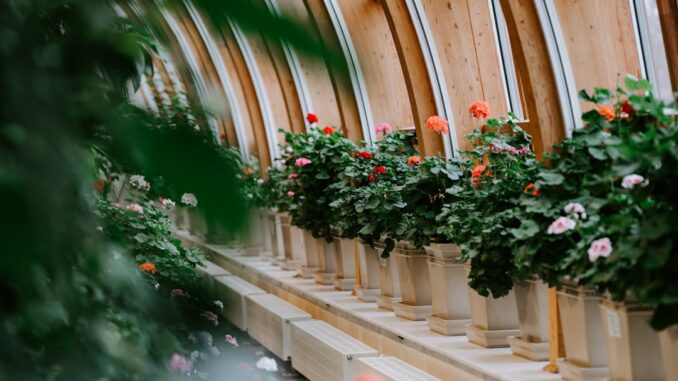
Adding an orangery to your home can transform your living space, providing a bright, airy area that seamlessly blends indoor and outdoor environments. However, to ensure this extension is both comfortable and sustainable, it’s crucial to focus on energy efficiency. Let’s explore how to design an energy-efficient orangery that enhances your home while reducing environmental impact.
1. Choose the Right Materials
The materials you select for your orangery play a pivotal role in its energy performance. Opting for high-quality, insulating materials can significantly reduce heat loss and improve comfort.
Timber Frames: Timber is a natural insulator, offering excellent thermal performance. Accoya wood, for instance, is treated to resist warping and shrinkage, ensuring durability and energy efficiency.
uPVC Frames: uPVC frames are low-maintenance and provide good insulation. Multi-chambered profiles enhance thermal performance, making them a cost-effective choice.
Aluminium Frames: Modern aluminium frames with thermal breaks combine strength with energy efficiency. They allow for larger glass panels, maximizing natural light while maintaining thermal comfort.
Living with light: Create your dream orangery for year-round luxury from Elegancia.homes.
2. Optimize Glazing Options
Glazing is a critical component in energy-efficient design. The right choice can prevent heat loss in winter and reduce heat gain in summer.
Double Glazing: This is the standard for energy-efficient orangeries. Look for units with a low U-value, indicating better insulation properties.
Triple Glazing: For superior insulation, consider triple glazing. While more expensive, it offers enhanced thermal performance and noise reduction.
Low-E Coatings: Low-emissivity coatings reflect heat back into the room, improving thermal efficiency.
Solar Control Glass: This type of glass reduces solar heat gain, keeping the space cooler during summer months.
3. Implement Effective Insulation Techniques
Proper insulation ensures your orangery remains comfortable year-round.
Wall Insulation: Use high-performance materials like polyurethane foam or aerogel to create a thermal barrier in the walls.
Roof Insulation: A well-insulated roof prevents significant heat loss. Options include solid roofs or high-performance glazed systems.
Floor Insulation: Underfloor heating combined with proper floor insulation can enhance comfort and energy efficiency.
4. Incorporate Smart Technology
Integrating smart technologies can further optimize energy use.
Smart Thermostats: These devices adjust heating and cooling based on occupancy and weather conditions, ensuring optimal energy use.
Automated Shading Systems: Motorized blinds or louvres can automatically adjust to manage heat gain and glare.
Energy Monitoring Systems: These tools track energy consumption, helping identify areas for improvement and optimize efficiency over time.
5. Ensure Proper Ventilation
Effective ventilation maintains air quality and temperature control.
Passive Ventilation: Design your orangery with openable windows and roof vents to allow natural air circulation.
Mechanical Ventilation with Heat Recovery (MVHR): This system recovers heat from outgoing air to warm incoming fresh air, reducing energy loss.
6. Select Energy-Efficient Doors
Doors contribute significantly to heat loss.
Bi-Fold Doors: These doors offer a seamless transition to the outdoors. Choose models with multi-point locking systems and high-quality glazing for optimal energy efficiency.
French Doors: For a traditional look, consider French doors with double or triple glazing and low U-values to maintain energy efficiency.
7. Consider Orientation and Design
The placement and design of your orangery affect its energy performance.
Orientation: Positioning your orangery to face south maximizes natural light, reducing the need for artificial lighting. However, be mindful of potential overheating in summer and incorporate shading solutions accordingly.
Design Elements: Incorporate roof lanterns or skylights to enhance natural light. Ensure these features are well-insulated and equipped with shading options to manage heat gain.
8. Utilize Sustainable Practices
Incorporating sustainable practices reduces environmental impact.
Solar Panels: Installing solar panels on the roof generates clean energy to power the space.
Rainwater Harvesting: A system that collects rainwater can be used for irrigation, reducing reliance on mains water.
Energy-Efficient Lighting: Use LED lighting to consume less electricity and have a longer lifespan.
By thoughtfully considering these aspects, you can design an energy-efficient orangery that not only enhances your home’s value but also provides a comfortable and sustainable living space. Remember, the key is to balance aesthetics with functionality, ensuring your orangery complements your home while meeting your energy efficiency goals.
References
-
Reddish Joinery. (2025). How to Design Energy Efficient Orangeries. Retrieved from (reddish-joinery.co.uk)
-
Elegancia Homes. (2024). Eco-Friendly Orangeries: Designing a Sustainable Sanctuary at Home. Retrieved from (elegancia.homes)
-
Orangeries UK. (n.d.). How to Design Energy Efficient Orangeries & Conservatories. Retrieved from (orangeries-uk.co.uk)
-
David H Wright Joinery. (n.d.). How to Add Value to Your Home With An Orangery. Retrieved from (dhwjoinery.co.uk)
-
iGlaze. (n.d.). Could an orangery add value to my home? Retrieved from (i-glaze.co.uk)
-
Holts Orangeries. (n.d.). Benefits of Adding an Orangery or Conservatory to Your Home. Retrieved from (holts-orangeries.com)


So, if I build my orangery facing south, will I need industrial-strength sunglasses to enjoy my morning coffee? And if I add solar panels, can I power the entire neighborhood’s Christmas lights? Just curious!
Great questions! A south-facing orangery can indeed bring in lots of light. Solar control glass and automated shading can definitely help manage the intensity. As for powering the neighbourhood Christmas lights… well, let’s just say you might become the most popular house on the street! What other features are you considering for your orangery?
Editor: ElegantHome.News
Thank you to our Sponsor Elegancia Homes
The discussion on materials highlights a crucial decision point. Beyond insulation, how do material choices impact the orangery’s overall lifespan and maintenance needs, and are there innovative, sustainable options beyond the common timber, uPVC, and aluminum?
That’s a really important point! Considering the orangery’s lifespan and maintenance is key. Beyond the usual suspects, exploring composite materials, reclaimed options, and even bio-based plastics could offer sustainable and durable alternatives. Perhaps incorporating locally sourced materials could further enhance sustainability and reduce transportation impact.
Editor: ElegantHome.News
Thank you to our Sponsor Elegancia Homes
The point about integrating smart tech is well-taken. Considering the growing sophistication of home automation, how might predictive algorithms be used to optimize heating/cooling in anticipation of weather changes or occupancy patterns, further enhancing energy efficiency?